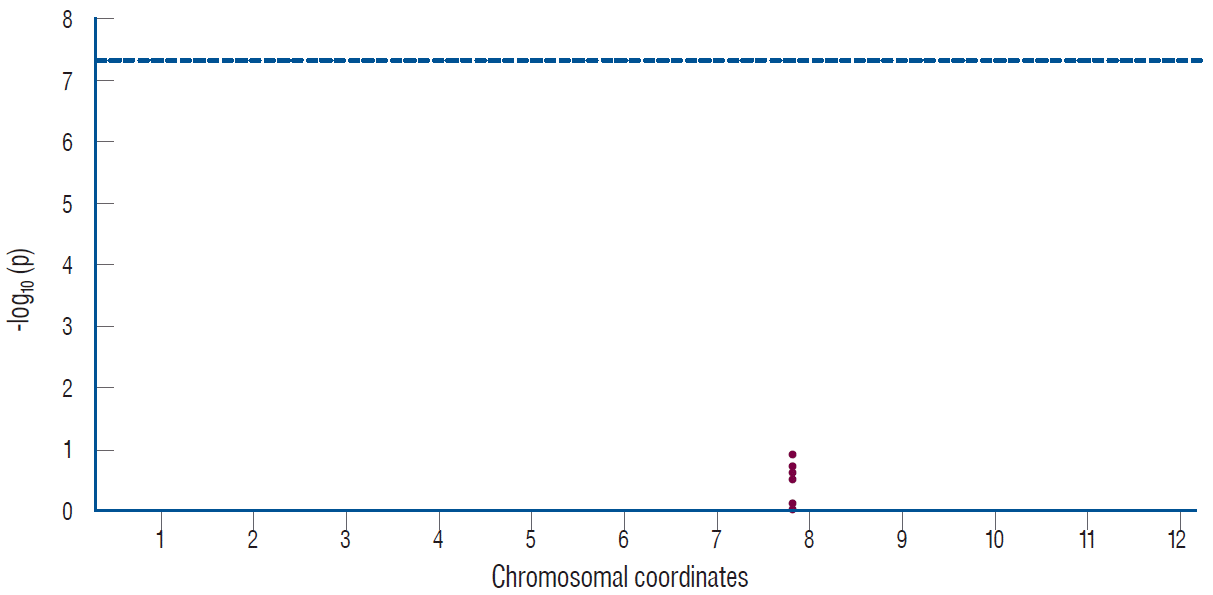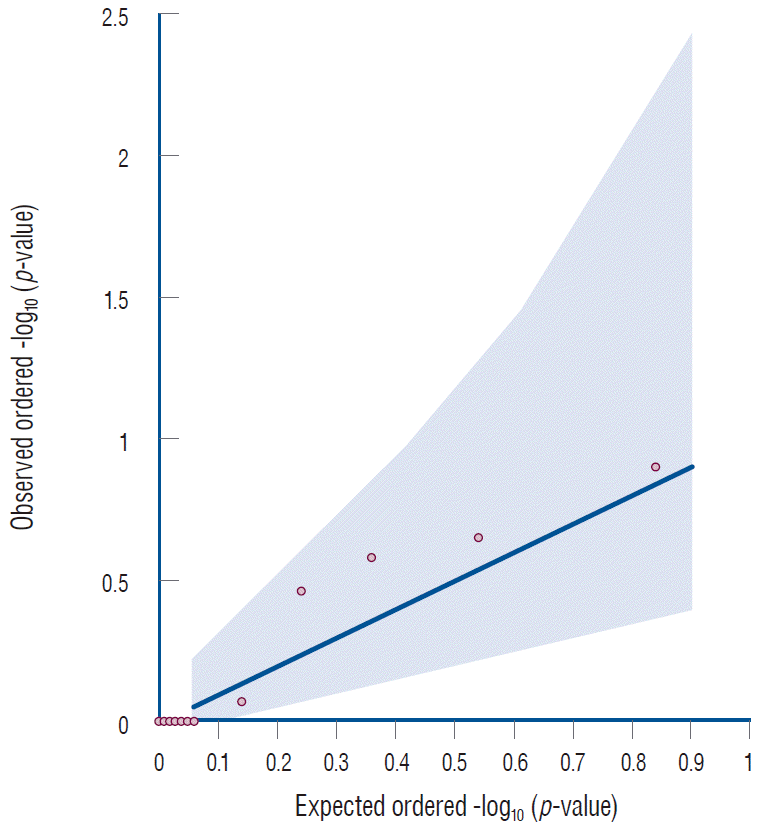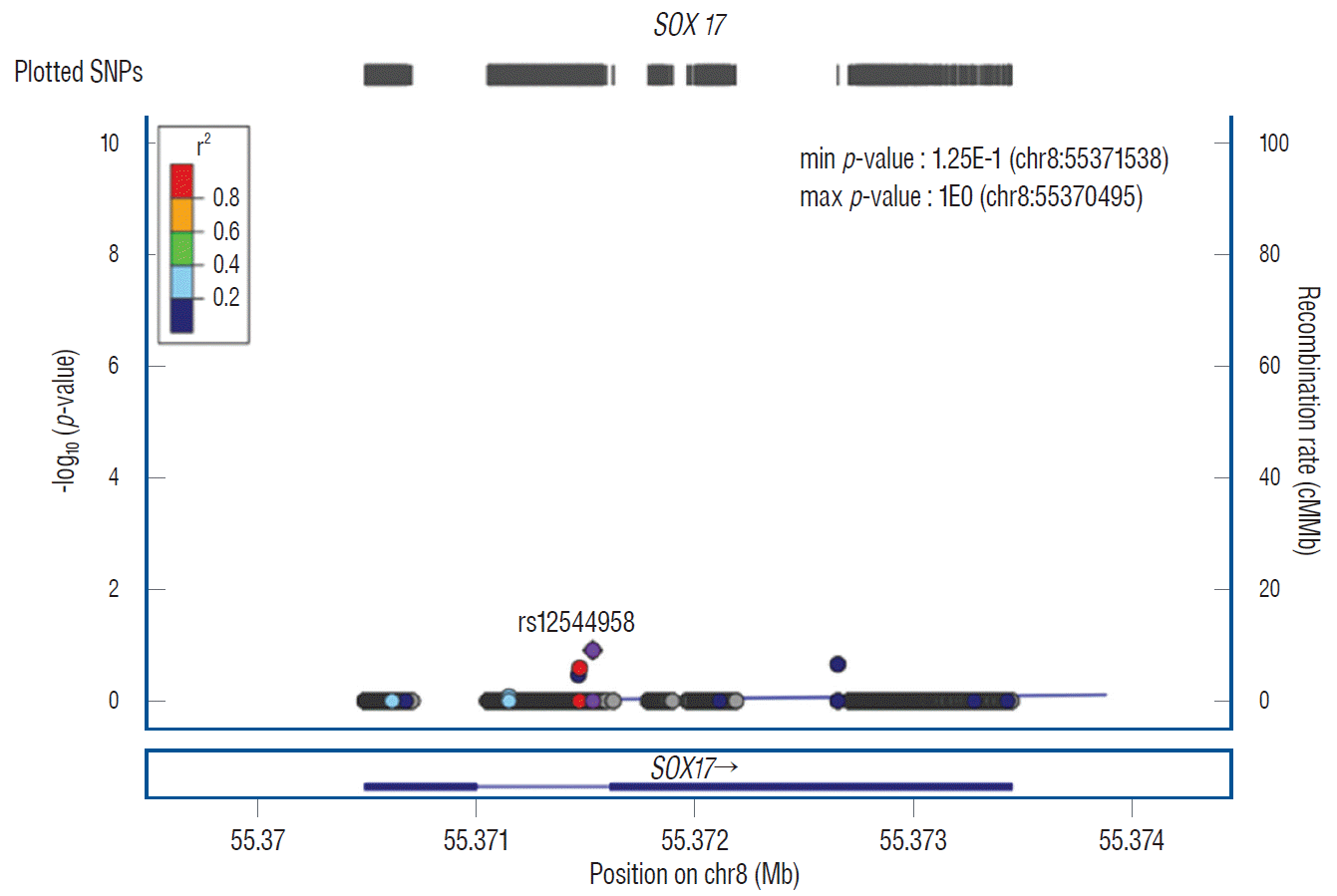1. Alg VS, Sofat R, Houlden H, Werring DJ. Genetic risk factors for intracranial aneurysms: a meta-analysis in more than 116,000 individuals. Neurology. 80:2154–2165. 2013.

2. Bilguvar K, Yasuno K, Niemelä M, Ruigrok YM, von Und Zu Fraunberg M, van Duijn CM, et al. Susceptibility loci for intracranial aneurysm in European and Japanese populations. Nat Genet. 40:1472–1477. 2008.

3. Caranci F, Briganti F, Cirillo L, Leonardi M, Muto M. Epidemiology and genetics of intracranial aneurysms. Eur J Radiol. 82:1598–1605. 2013.

4. Chalouhi N, Ali MS, Jabbour PM, Tjoumakaris SI, Gonzalez LF, Rosenwasser RH, et al. Biology of intracranial aneurysms: role of inflammation. J Cereb Blood Flow Metab. 32:1659–1676. 2012.

5. Cho YD, Jeon JP, Rhim JK, Park JJ, Yoo RE, Kang HS, et al. Progressive thrombosis of small saccular aneurysms filled with contrast immediately after coil embolization: analysis of related factors and long-term follow-up. Neuroradiology. 57:615–623. 2015.

6. Cho YD, Kim SE, Lim JW, Choi HJ, Cho YJ, Jeon JP. Protected versus unprotected carotid artery stenting : meta-analysis of the current literature. J Korean Neurosurg Soc. 61:458–466. 2018.

7. Du Y, Martin JS, McGee J, Yang Y, Liu EY, Sun Y, et al. A SNP panel and online tool for checking genotype concordance through comparing QR codes. PLoS One. 12:e0182438. 2017.

8. Fuying Z, Yingying Y, Shining Z, Kezhong Z, Yanyan S, Xuemei Z, et al. Novel susceptibility genes were found in a targeted sequencing of stroke patients with or without depression in the Chinese Han population. J Affect Disord. 255:1–9. 2019.

9. Hashikata H, Liu W, Inoue K, Mineharu Y, Yamada S, Nanayakkara S, et al. Confirmation of an association of single-nucleotide polymorphism rs1333040 on 9p21 with familial and sporadic intracranial aneurysms in Japanese patients. Stroke. 41:1138–1144. 2010.

10. Hixson JE, Jun G, Shimmin LC, Wang Y, Yu G, Mao C, et al. Whole exome sequencing to identify genetic variants associated with raised atherosclerotic lesions in young persons. Sci Rep. 7:4091. 2017.

11. Hong EP, Jeon JP, Kim SE, Yang JS, Choi HJ, Kang SH, et al. A novel association between lysyl oxidase gene polymorphism and intracranial aneurysm in Koreans. Yonsei Med J. 58:1006–1011. 2017.

12. Hong EP, Kim BJ, Cho SS, Yang JS, Choi HJ, Kang SH, et al. Genomic variations in susceptibility to intracranial aneurysm in the Korean population. J Clin Med. 8:275. 2019.

13. Hong EP, Kim BJ, Kim C, Choi HJ, Jeon JP. Association of sox17 gene polymorphisms and intracranial aneurysm: a case-control study and meta-analysis. World Neurosurg. 110:e823–e829. 2018.

14. Hong EP, Park JW. Sample size and statistical power calculation in genetic association studies. Genomics Inform. 10:117–122. 2012.

15. Jeon JP, Cho YD, Rhim JK, Yoo DH, Kang HS, Kim JE, et al. Extended monitoring of coiled aneurysms completely occluded at 6-month follow-up: late recanalization rate and related risk factors. Eur Radiol. 26:3319–3326. 2016.

16. Jeon JP, Hong EP, Kim JE, Ha EJ, Cho WS, Son YJ, et al. Genetic risk assessment of elastin gene polymorphisms with intracranial aneurysm in Koreans. Neurol Med Chir (Tokyo). 58:17–22. 2018.

17. Kim BJ, Kim Y, Hong EP, Jeon JP, Yang JS, Choi HJ, et al. Correlation between altered DNA methylation of intergenic regions of ITPR3 and development of delayed cerebral ischemia in subarachnoid hemorrhage patients. World Neurosurg. 130:e449–e456. 2019.
18. Kim CH, Jeon JP, Kim SE, Choi HJ, Cho YJ. Endovascular treatment with intravenous thrombolysis versus endovascular treatment alone for acute anterior circulation stroke : a meta-analysis of observational studies. J Korean Neurosurg Soc. 61:467–473. 2018.

19. Kim TG, Kim NK, Baek MJ, Huh R, Chung SS, Choi JU, et al. The relationships between endothelial nitric oxide synthase polymorphisms and the formation of intracranial aneurysms in the Korean population. Neurosurg Focus. 30:E23. 2011.

20. Lee S, Kim IK, Ahn JS, Woo DC, Kim ST, Song S, et al. Deficiency of endothelium-specific transcription factor Sox17 induces intracranial aneurysm. Circulation. 131:995–1005. 2015.

21. Li B, Hu C, Liu J, Liao X, Xun J, Xiao M, et al. Associations among genetic variants and intracranial aneurysm in a Chinese population. Yonsei Med J. 60:651–658. 2019.

22. Nahed BV, Bydon M, Ozturk AK, Bilguvar K, Bayrakli F, Gunel M. Genetics of intracranial aneurysms. Neurosurgery. 60:213–225. discussion 225-226. 2007.

23. Petersen BS, Fredrich B, Hoeppner MP, Ellinghaus D, Franke A. Opportunities and challenges of whole-genome and -exome sequencing. BMC Genet. 18:14. 2017.

24. Song MK, Kim MK, Kim TS, Joo SP, Park MS, Kim BC, et al. Endothelial nitric oxide gene T-786C polymorphism and subarachnoid hemorrhage in Korean population. J Korean Med Sci. 21:922–926. 2006.

25. Teer JK, Mullikin JC. Exome sequencing: the sweet spot before whole genomes. Hum Mol Genet. 19(R2):R145–R151. 2010.

26. Wu Y, Li Z, Shi Y, Chen L, Tan H, Wang Z, et al. Exome sequencing identifies LOXL2 mutation as a cause of familial intracranial aneurysm. World Neurosurg. 109:e812–e818. 2018.

27. Yamada Y, Kato K, Oguri M, Horibe H, Fujimaki T, Yasukochi Y, et al. Identification of nine genes as novel susceptibility loci for early-onset ischemic stroke, intracerebral hemorrhage, or subarachnoid hemorrhage. Biomed Rep. 9:8–20. 2018.

28. Yasuno K, Bilguvar K, Bijlenga P, Low SK, Krischek B, Auburger G, et al. Genome-wide association study of intracranial aneurysm identifies three new risk loci. Nat Genet. 42:420–425. 2010.








 PDF
PDF Citation
Citation Print
Print



 XML Download
XML Download